No one likes a bunch of mosquitoes buzzing around their ears all day long, right?! Besides being so annoying and often causing serious allergic reactions, mosquitoes carry many dangerous diseases, so we better get rid of them before they cause any trouble!
Luckily, we can do so by natural means – all that’s needed is to attract their natural predators to our yards! Not only will we get rid of mosquitoes, but also provide some beautiful birds with food and a safe place!
So if you’re wondering what birds will delight in a mosquito meal, we’ve got the answer!
8 Types of Birds That Eat Mosquitoes
Before discussing each bird group, we’d like to mention that most of these birds aren’t specialized in eating mosquitoes only. They’re primarily insectivorous and will feed on various types of insects.
If you want to attract them to your yard, we recommend researching their diet to understand their nutritional requirements. This way, you’ll have more chances to get them closer to your house.
1. Nighthawks

Nighthawks form the Chrodeilinae subfamily, which is further divided into three genera consisting of ten nighthawk species. They are nocturnal birds endemic to the western hemisphere. They’re excellent migrants, being able to travel 20,000 kilometers every year to get from their wintering grounds to their breeding grounds!
These creatures are experts at hunting and eating insects, mosquitoes included. Since nighthawks are most active in the late evening, early morning, and at night, their schedule overlies the schedule of mosquitoes, which are usually most active in the early morning.
What makes nighthawks excellent at catching mosquitoes is their bill, which is specialized in hunting insects. These bills have a slightly hooked upper tip and can open wide to catch even the largest flying insects.
2. Swallows
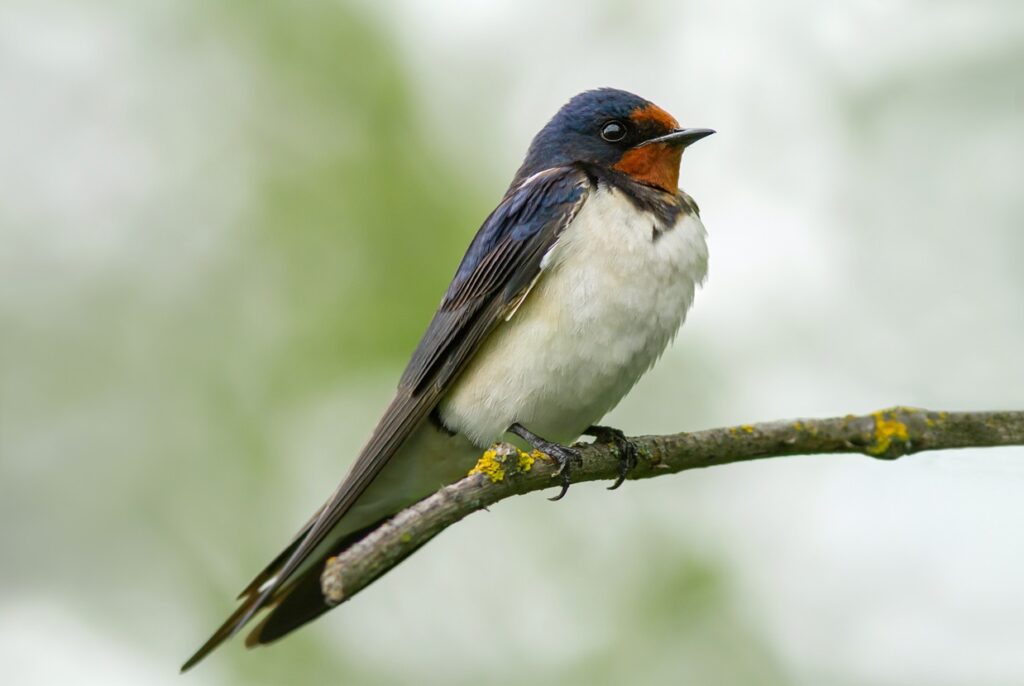
Swallows are birds in the Hirundinidae family, closely related to martins and saw-wings. They are passerine songbirds that are spread around the world. By far the most well-known swallow species are the tree swallow and the barn swallow, found in the Americas, Europe, Asia, and Africa.
Swallows are primarily insectivorous. The type of prey and the way they hunt and catch it usually vary depending on the species, but at least some of them will take mosquitoes as prey. It’s certain though that most avoid insects that may harm them, such as bees or wasps. So if you’re a beekeeper, swallows will definitely stay away from your yard.
Take tree swallow, for example. They usually forage around 50 meters (160 feet) above the ground. They may take insects while flying, but occasionally catch them on the ground and even in the water. Although tree swallows sometimes delight in mollusks, spiders, and fruit, most of their diets consist of flies like mosquitoes.
The barn swallow, on the other hand, will usually hunt insects close to the ground, often following animals or humans. They will sometimes catch prey from the water surface as well. As in the case of tree swallows, barn swallows feed primarily on flies, including mosquitoes. Other preferred meals include crickets, beetles, and grasshoppers.
Other swallows prey on mosquitoes, too, so if you spot some around your yard, don’t chase them away! You’ll find them very useful in the summer!
3. Cardinals
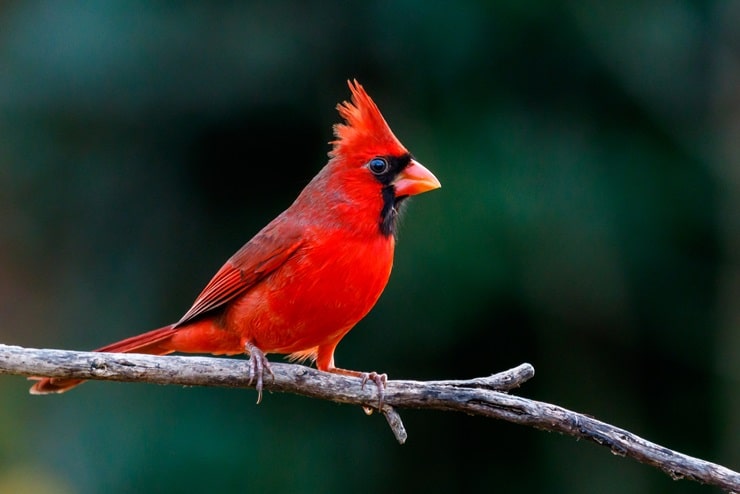
Cardinals form the Cardinalidae genus, which consists of only three species found in North and South America. By far the most known species is the northern cardinal, but you might’ve also heard about the other two: the desert cardinal and the vermilion cardinal.
The northern cardinal is common in southeastern Canada, the eastern United States, Mexico, Guatemala, and Belize. The desert cardinal is endemic to dry southwestern North America and Mexico, while the vermilion cardinal lives only in Colombia and Venezuela.
While these gorgeous birds feed primarily on seeds and fruits, they’ll also occasionally delight in some insects, including mosquitoes. They may also eat snails, beetles, and grasshoppers. That is, if we’re discussing adults. Young birds, on the other hand, are fed almost exclusively insects.
So if there’s a nest of cardinals somewhere around your house, the area will be clear of insects in no time, because the little ones require plenty of food!
4. Bluebirds

There are three bluebird species in the Sialia genus: the mountain bluebird, the western bluebird, and the eastern bluebird. They’re divided depending on their distribution, but all are endemic to North America.
These insect-eating birds are by far some of the most popular species for those with a backyard! Besides having a stunning appearance, they’re excellent at keeping mosquitoes and other insects alike away from your house, so you might want to consider installing a bird feeder to attract them!
During the summer, these birds primarily eat insects, including mosquitoes, although most show a preference for beetles, crickets, and katydids. They’ll also eat worms, spiders, centipedes, and snails. Occasionally, they’ll also enjoy a fruit meal, although this is most common during the winter.
5. Nuthatches
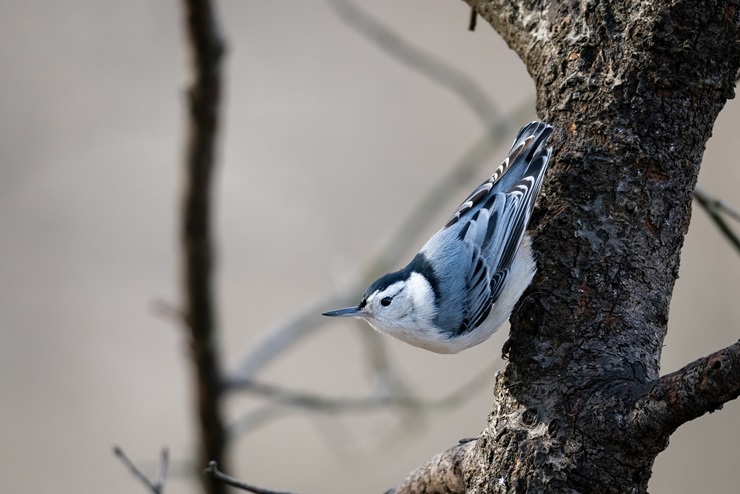
Nuthatches form the Sitta genus of passerine birds. They’re found in the temperate and montane woodlands of the North, although some species are now found in Eurasia’s warmer regions.
Most nuthatch species aren’t migratory, that’s why you might spot them around your house during the winter, too, which is why we recommend setting up a bird feeder to help them survive the cold. During the summer, you’ll be rewarded for your effort, as the nuthatches will help you get rid of all kinds of unwanted insects roaming through your garden!
These beautiful birds feed almost exclusively on insects and other invertebrates, including mosquitoes. Although they may sometimes eat seeds as well, especially during the winter, when insects aren’t abundant, the breeding season is usually reserved only for live prey.
Since they prefer eating large insects, you can rest assured that these lovely birds will clear your yard of even the largest, most annoying mosquitoes!
6. Wrens

Wrens form the Troglodytidae family, which is further divided into 19 genera consisting of 88 bird species! All of them are found from Alaska to southern Argentina, except for the Eurasian wren, which lives in Europe, Asia, and the northern part of Africa. They’re highly adaptable species and can be found in various habitats, ranging from dry areas to rainforests.
Wrens are primarily insectivorous, meaning they’ll never miss an opportunity to delight in some tasty mosquitoes! Besides mosquitoes and other insects, wrens will also eat spiders and other small arthropods.
Larger species are even known to eat small frogs and lizards, so if you make your garden appealing to the wrens in your area, you won’t only get rid of mosquitoes but also of small, unwanted frogs! Some species will also feed on seeds and berries.
7. Warblers
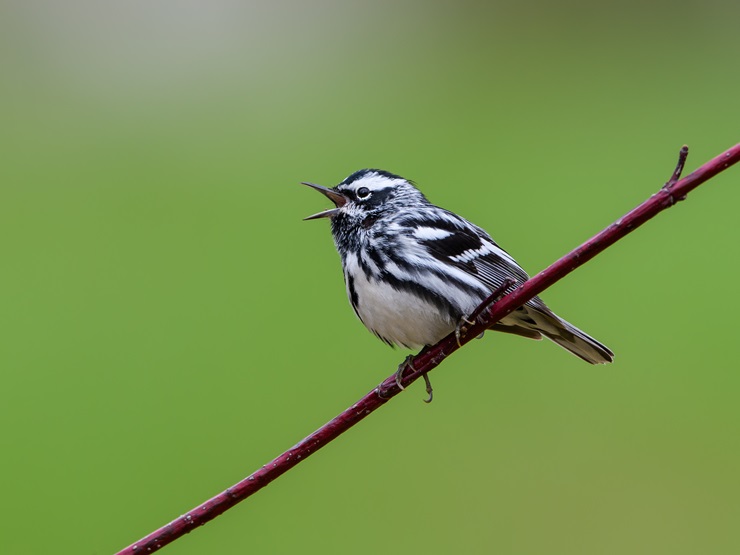
The term warbler doesn’t refer to a particular bird family. It is a common term used for members belonging to various groups of birds that aren’t necessarily related to each other. However, they do share some common characteristics and behavioral traits, including their diet.
One of the most known warbler species is the garden warbler (Sylvia borin), which is widespread throughout Europe during the breeding season. That’s the time of the year this species feeds almost exclusively on insects. They definitely won’t refuse some tasty mosquitoes flying around your house! These warblers will also enjoy other small invertebrates, like spiders. After their nesting period, however, they switch to feeding on fruits and only occasionally prey on insects just to ensure some body fat for the upcoming migration.
Another warbler species is the black-and-white warbler (Mniotilta varia), which is endemic to North America and Central America, being a rare vagrant in Europe. Like other warblers, the black-and-white warbler feeds on insects and spiders. However, there’s a unique thing about the way they hunt their prey, which is unusual for typical warblers – they move up and down tree trunks!
8. Hummingbirds
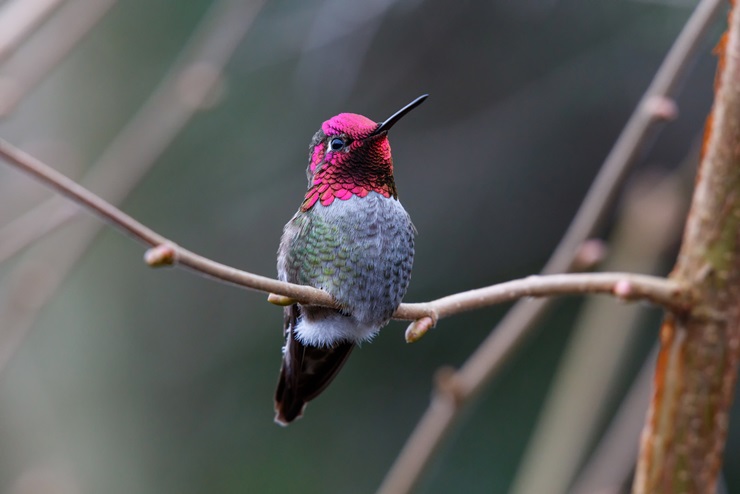
The famous hummingbirds are mosquito-eaters! These birds form the Trochilidae family consisting of approximately 360 species spread throughout 113 genera. Just imagine how many types of hummingbirds there are! And most of them are found in Central and South America, so if you’re an inhabitant of that part of the world, you’ve probably spotted a hummingbird at least once in your lifetime!
Besides their uniqueness and beauty, they’re a favorite for gardeners and homeowners, as they’re excellent insect repellents!
Hummingbirds have a diverse diet. They eat multiple insect types, including mosquitoes, gnats, and aphids, as well as spiders (and their webs, too), and nectar.
However, since nectar is a poor nutrient source, hummingbirds rely primarily on live prey to ensure their nutritional needs. In fact, they are experts at catching insects thanks to their specialized beaks.
More precisely, their lower beaks are so flexible that when they widen at the base, they bend to 25 degrees! That’s how these gorgeous birds can easily catch larger insects or more insects at a time, especially if they hover within insect swarms!
